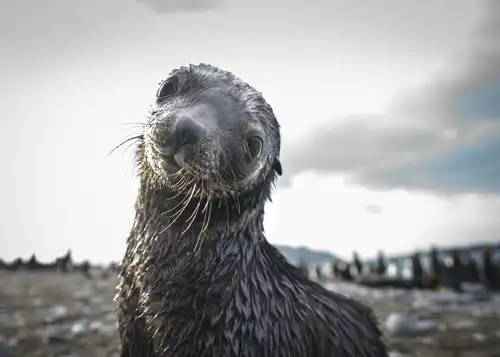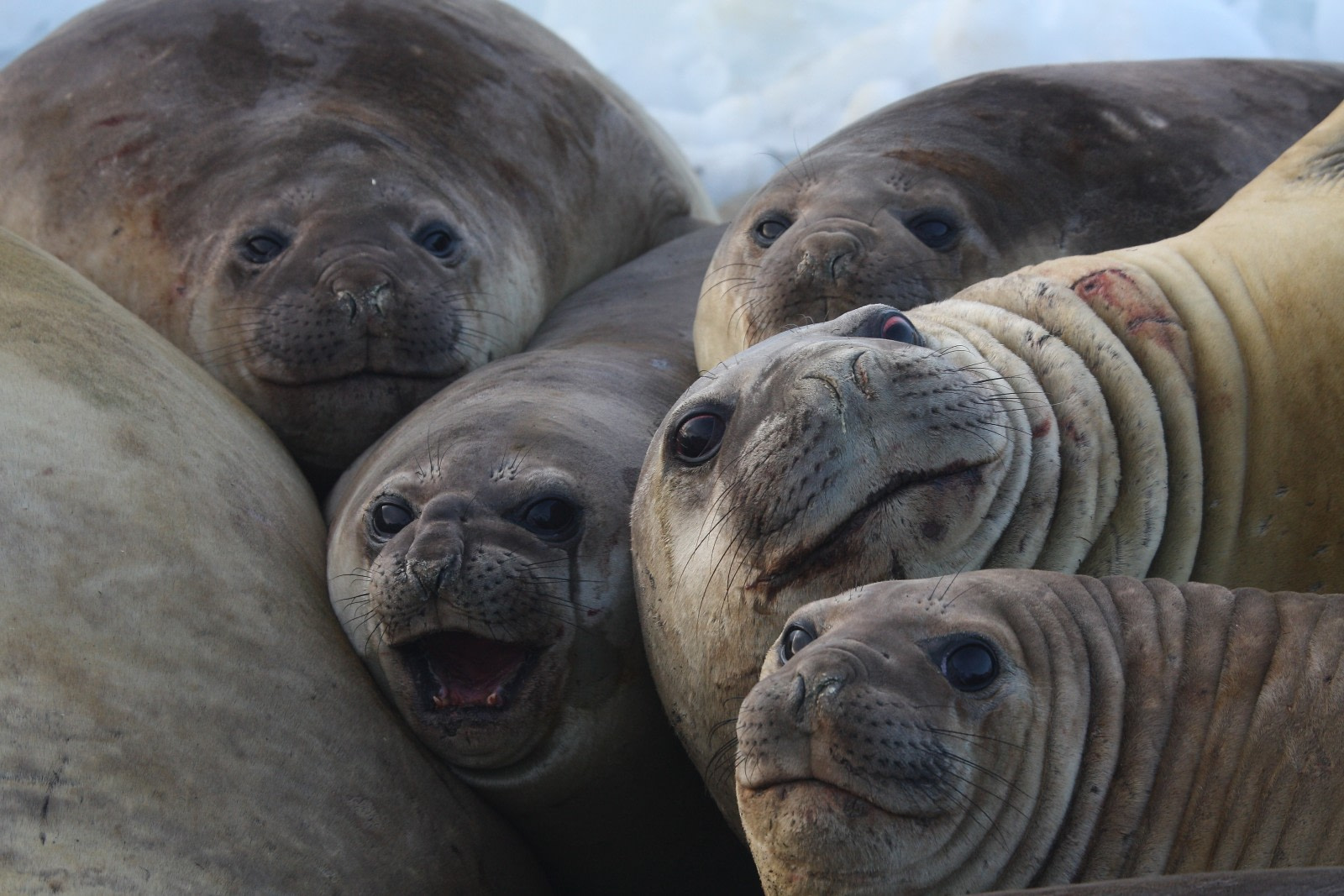Name: Southern elephant seal (Mirounga leonine)
Length: Up to 6.2 meters (20.3 feet)
Weight: Up to 4,000 kg (8,820 pounds)
Location: Antarctic and sub-Antarctic waters
Conservation status: Least concern
Diet: Squid, fish, sharks, rays, ratfish, molluscs, crustaceans, krill, algae
Appearance: Black or reddish-brown
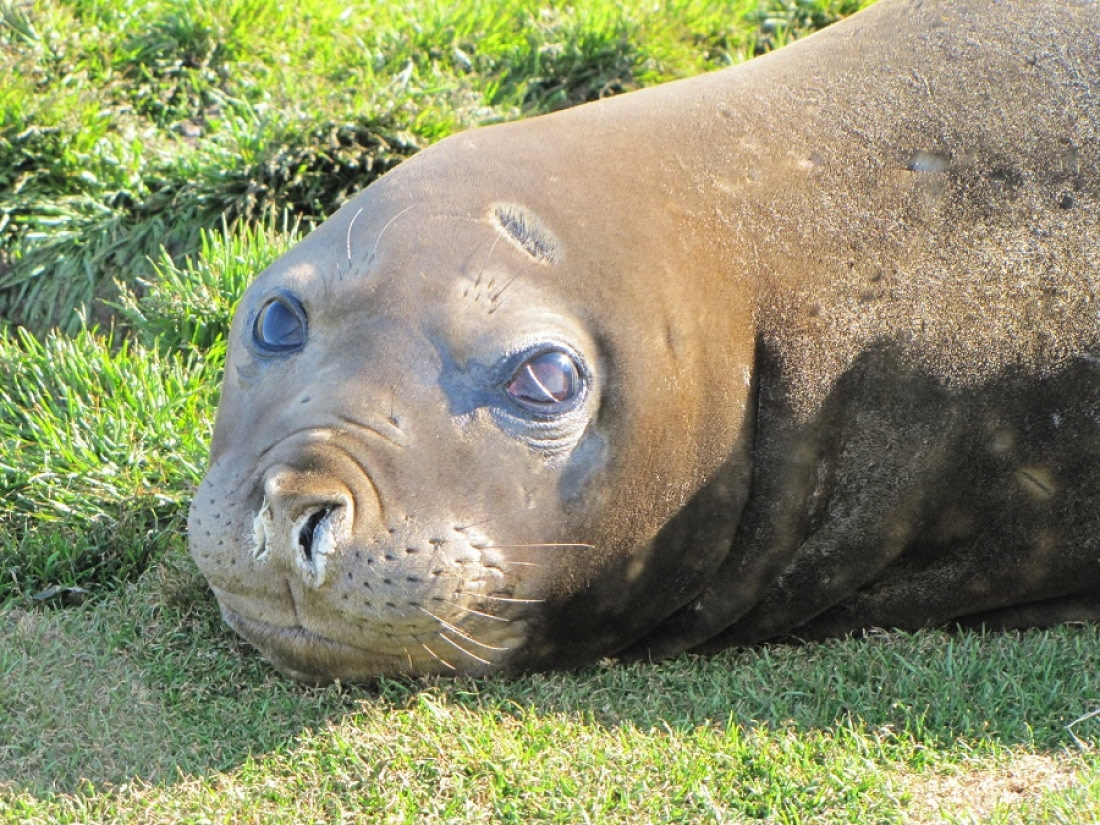
How do southern elephant seals hunt?
Male southern elephant seals hunt along the continental shelf and ocean floor, while females hunt in the open ocean. They use sight and vibrissae whiskers to sense movement. Males return to the same areas yearly, while females are more random.
Southern elephant seal diving abilities
They can dive from 400 to 1,000 meters (1,300 to 3,300 feet) for up to 20 minutes. The deepest recorded dive reached over 2,100 meters (6,890 feet). They exhale before diving to avoid decompression sickness and store oxygen in hemoglobin and muscles. Their blood contains 50% more hemoglobin than land mammals, and they slow their heartbeats to 5 - 15 beats per minute.

Do southern elephant seals socialize?
Male southern elephant seals fight for dominance over female harems and must continuously battle to maintain their rank. Bulls may stay on land for months to defend their territories, using their weight and teeth in battles. They travel alone while at sea.
How fast can southern elephant seals travel?
On land, they move at about 5 kph (3 mph). While swimming, they travel at speeds around 5 - 10 kph (3 - 6 mph).
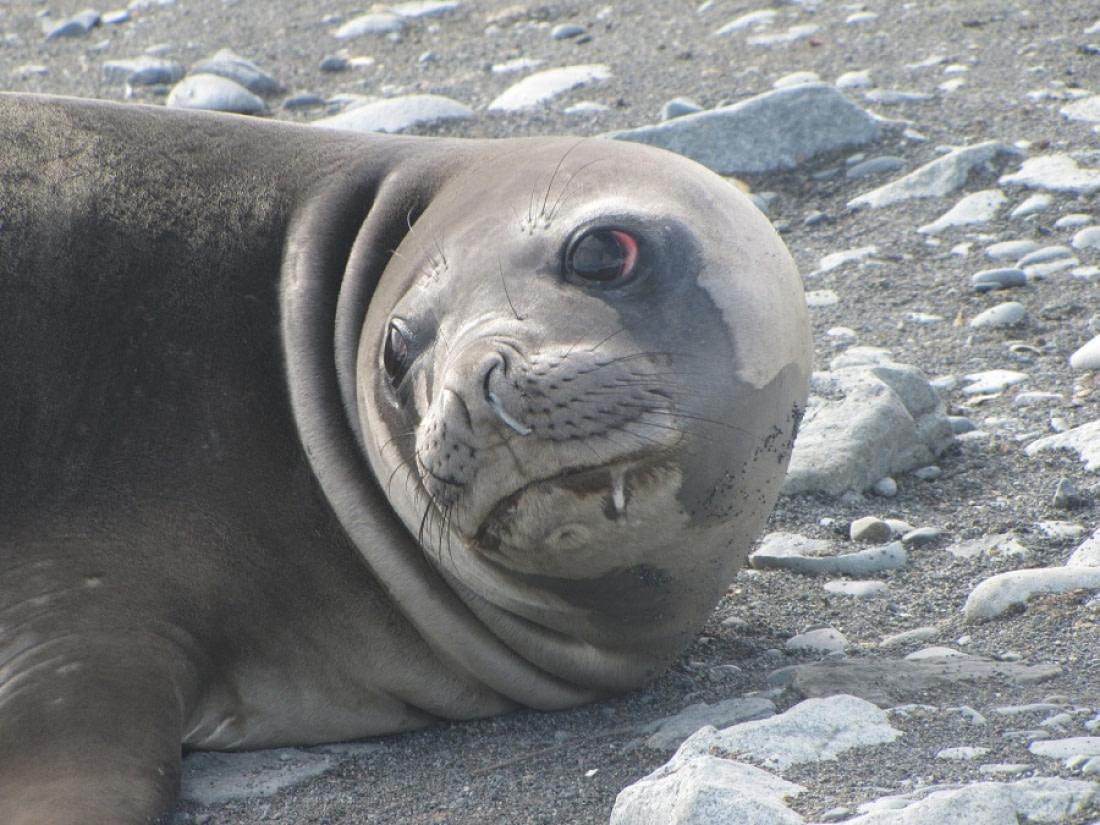
Southern elephant seal mating rituals
Females reach sexual maturity at three years, males at six. Males usually become dominant bulls around nine years old. Bulls arrive at mating grounds in December through January, battling for dominance and establishing harems of 30 to 100 females. Females arrive already pregnant from the previous season, and pups are born about five days after. Pups nurse for 26 days, quadrupling their weight before being weaned off.
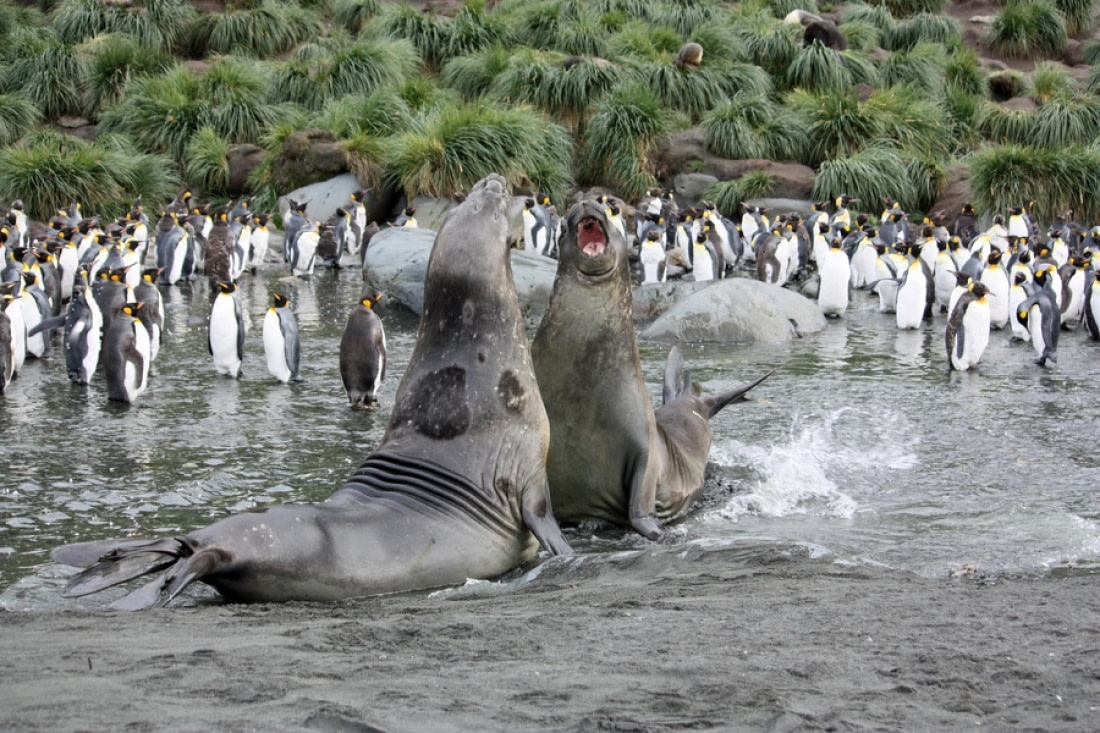
How long do southern elephant seals live?
Females live about 20 - 25 years, while males generally reach 15 years.
How many southern elephant seals are there today?
Conservation efforts have increased their population to roughly 740,000.
Do southern elephant seals have any predators?
Pups are prey for sharks, leopard seals, and sea lions. Both pups and adults can be attacked by orca whales.
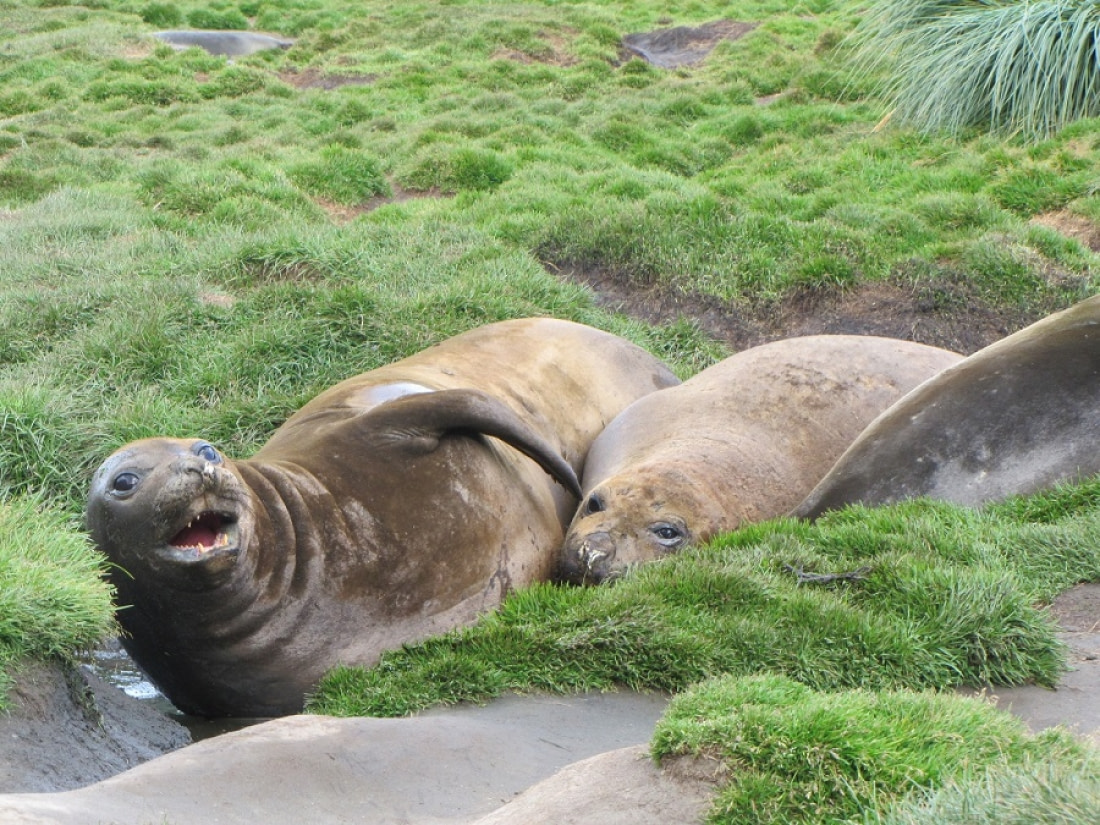
Six illuminating southern elephant seal facts
- They can travel up to 33,800 km (21,000 miles) per year, the longest known migration for any mammal.
- Their trunk-like nose helps males fend off other males and re-absorb moisture during mating fasts.
- They molt, shedding their outer layer of skin.
- Bulls form a shield of keratinized skin on their chests for protection during fights.
- They spend almost 90% of their lives in the water.
- Males can weigh up to 10 times what females weigh, the greatest weight disparity between sexes of any mammal.
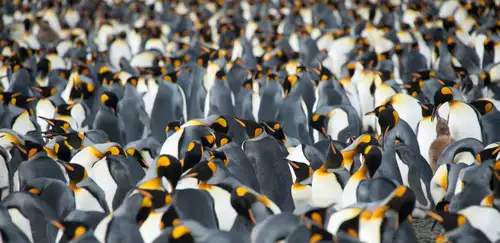
Experience King Penguins, Seals and More in South Georgia
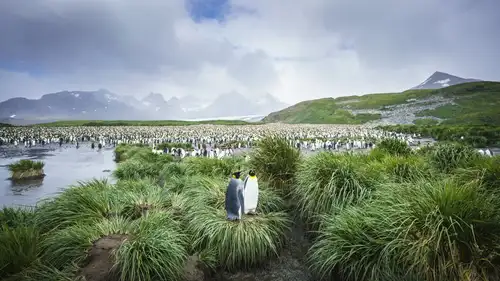
The South Georgia Seven: Hikes, Fjords, Whales, & Penguins
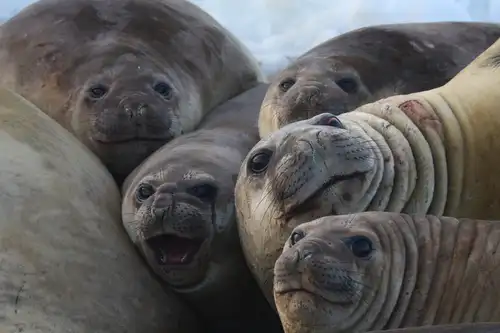
Large and in Charge: Antarctica’s Southern Elephant Seals

Bouvet Island: The Most Remote Island in the World
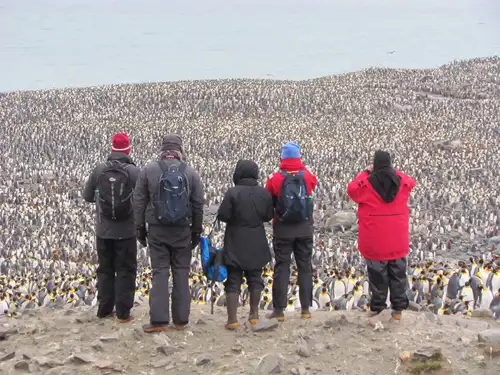
Scenes from St. Andrews Bay: 12 Pics of Penguins, Seals, and More
